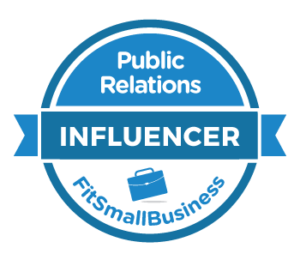The turning of the calendar in a new year is always a good time to reflect and look ahead. In PR, we take start of the year as an opportunity to make sure that account basics are in place and develop PR plans for the coming months.
I was inspired towards this end while working with our teams at Fusion PR by a very relevant article and book.
The article, Thinking Happy Thoughts at Work, from the WSJ, ran last week and was timely. Many work places are not particularly happy right now given cutbacks and the general state of business. The article described strategies that companies are using to deal with this, and focused in particular on the growing trend of using happiness coaches:
Indeed, the happiness coaches go beyond traditional positive-thinking approaches, taking new tacks that tend to ring true with workers. Some examples: Write e-mails to your co-workers every day thanking them for something they have done. Meditate daily to clear your mind. Do something for somebody without expecting anything in return. Write in a journal about things you are thankful for; look for traits you admire in people and compliment them. Focus on the process of your work, which you can control, rather than outcomes, which you can’t. And don’t immediately label events good or bad, but remain open to potentially positive outcomes of even the most seemingly negative events.
One passage that caught my attention was the idea of focusing on process and not getting so hung up on things that are out of your control. This especially tings true for PR. We cannot control the media, bloggers, or marketplace conditions. We emphasize these facts when we do media training with clients.
Through a focus on repeatable processes, and careful attention to each step we can achieve excellent results for our clients while injecting a does of sanity into our work lives – and hopefully leading to a more rewarding and happier career and existence.
Very much in line with this train of thought, I took note about all the recent buzz regarding the book Checklist Manifesto. The author has gotten tons of coverage for his book and approach. The following text is from the NY Times review of the book:
Doctors often overlook or omit steps in the multitude of tasks we perform every day. As Atul Gawande argues in “The Checklist Manifesto,” these are situations where a simple to-do list could help. For example, a five-point checklist implemented in 2001 virtually eradicated central line infections in the intensive care unit at Johns Hopkins Hospital, preventing an estimated 43 infections and eight deaths over 27 months. Gawande notes that when it was later tested in I.C.U.’s in Michigan, the checklist decreased infections by 66 percent within three months and probably saved more than 1,500 lives within a year and a half.
Gawande, a professor of surgery at Harvard Medical School and a staff writer at The New Yorker, makes the case that checklists can help us manage the extreme complexity of the modern world.
It seems obvious to me that simple checklists can be part of the processes that help us manage our work and deliver results for clients. I will share some of the PR checklists I am working on in an upcoming post.


